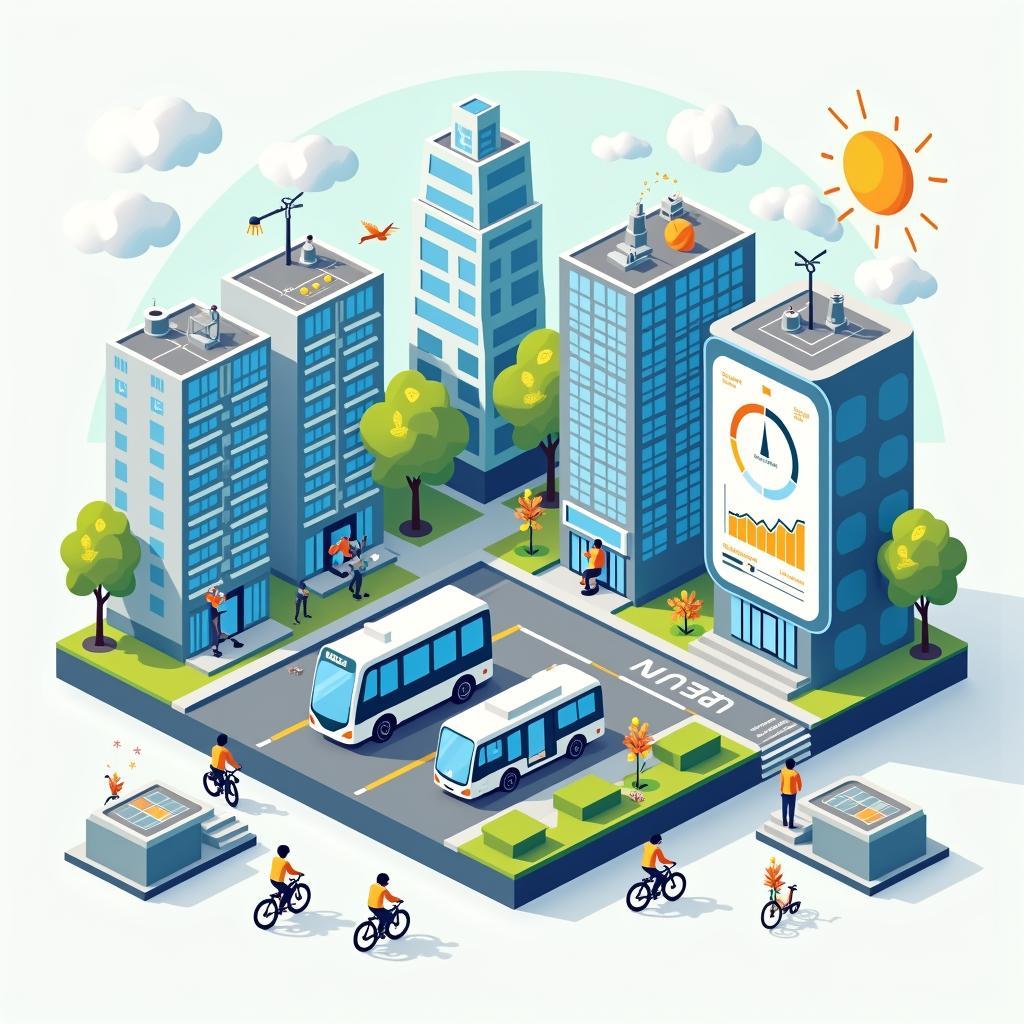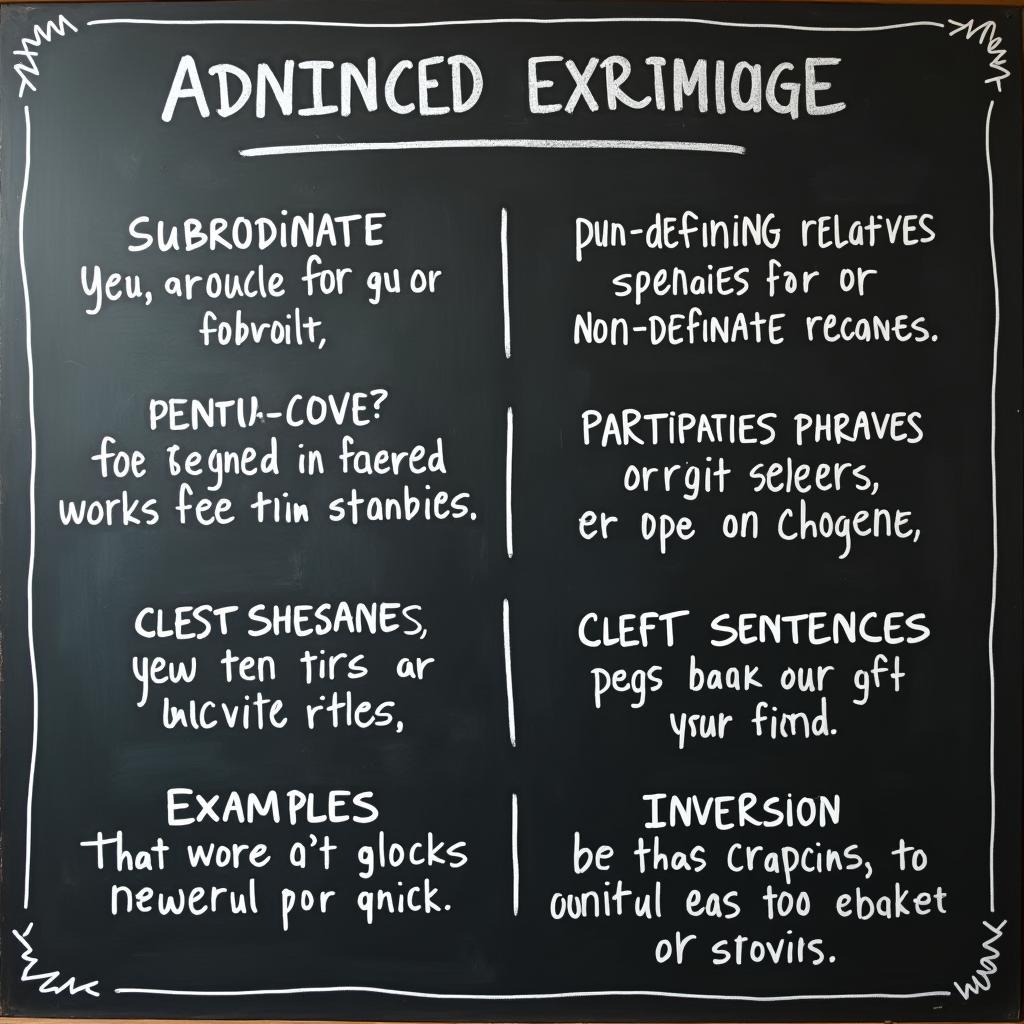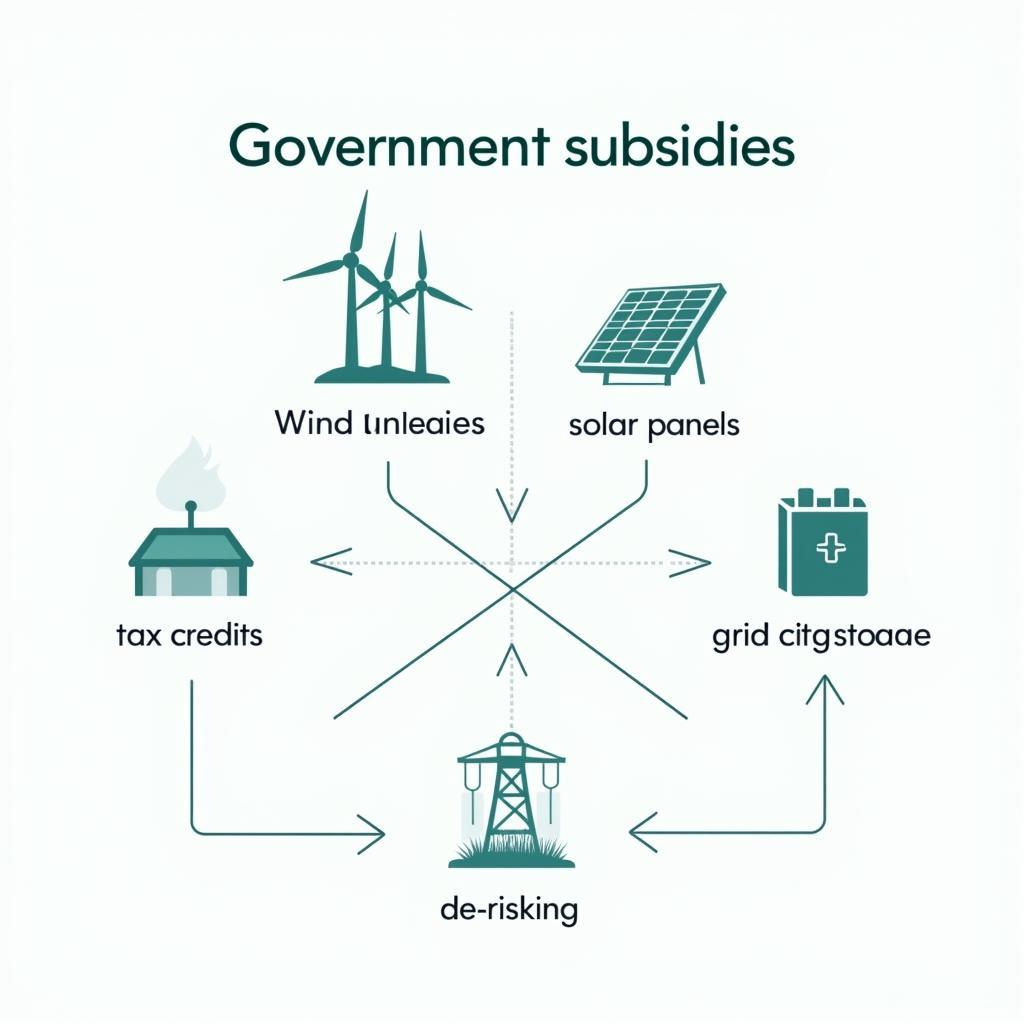Mở bài
Chủ đề The Benefits Of Smart Cities For Sustainable Development xuất hiện ngày càng thường xuyên trong IELTS Writing Task 2 vì nó kết nối ba chủ điểm lớn: công nghệ, đô thị và phát triển bền vững. Thí sinh thường bị “khóa” ý vì khái niệm “smart city” khá rộng (giao thông thông minh, lưới điện, dữ liệu mở, quản trị số), trong khi tiêu chí chấm yêu cầu xác lập luận điểm rõ ràng, ví dụ thuyết phục và cân bằng rủi ro – lợi ích. Trong bài viết này, bạn sẽ học được: 3 bài mẫu (Band 8-9, Band 6.5-7, Band 5-6), phân tích chấm điểm chi tiết theo 4 tiêu chí, bộ từ vựng – cấu trúc câu ăn điểm và checklist kiểm tra nhanh trước khi nộp bài.
Nội dung bài viết
- Mở bài
- 1. Đề Writing Part 2
- 2. Bài mẫu Band 8-9
- Phân tích Band điểm
- Các yếu tố giúp bài này được chấm điểm cao
- 3. Bài mẫu Band 6.5-7
- Phân tích Band điểm
- So sánh với bài Band 8-9
- 4. Bài mẫu Band 5-6
- Phân tích Band điểm
- Những lỗi sai của bài – phân tích & giải thích
- Cách Cải Thiện Từ Band 6 Lên Band 7
- 5. Từ vựng quan trọng cần nhớ
- 6. Cấu trúc câu dễ ăn điểm cao
- 7. Checklist Tự Đánh Giá
- Kết bài
Một số đề thi/tham khảo thực tế liên quan chủ đề đô thị thông minh – bền vững, được công bố trên các nguồn uy tín (IELTS Liz, IELTS-Blog, British Council/IDP) gồm:
- Some cities have car-free days. Do the advantages outweigh the disadvantages? (IELTS-Blog: Urban policy – transport and environment)
- Governments should invest more in public transport than in road infrastructure. To what extent do you agree or disagree? (IELTS Liz: Transport and sustainability)
- Encouraging cycling instead of cars is the best way to improve city health and environment. Is this a positive development? (Nguồn luyện thi uy tín, chủ đề môi trường – đô thị)
Để hiểu thêm mối quan hệ giữa công nghệ và phát triển bền vững nói chung, bạn có thể tham khảo bài viết liên quan: Điều này có điểm tương đồng với the role of technology in promoting sustainable development khi các thành phố dùng dữ liệu để tối ưu năng lượng và giao thông: https://vn.ielts.net/the-role-of-technology-in-promoting-sustainable-development/
1. Đề Writing Part 2
Smart cities are often proposed as a key pathway to sustainable development. Discuss the benefits and potential risks, and give your own opinion.
Dịch đề: Các thành phố thông minh thường được coi là con đường chủ chốt hướng tới phát triển bền vững. Hãy thảo luận các lợi ích và rủi ro tiềm ẩn, đồng thời nêu quan điểm của bạn.
Phân tích đề bài:
- Dạng câu hỏi: Discussion + Opinion (Discuss both sides and give your opinion). Yêu cầu: trình bày cả lợi ích và rủi ro, sau đó khẳng định quan điểm cá nhân rõ ràng.
- Thuật ngữ:
- Smart city: hệ sinh thái dùng công nghệ số (IoT, dữ liệu lớn, AI) để tối ưu dịch vụ đô thị.
- Sustainable development: phát triển đáp ứng nhu cầu hiện tại mà không làm tổn hại khả năng đáp ứng nhu cầu của thế hệ tương lai (môi trường – kinh tế – xã hội).
- Lỗi thường gặp:
- Nhầm “smart city” chỉ là “nhiều công nghệ” mà bỏ qua mục tiêu bền vững.
- Viết lệch: chỉ nói lợi ích (hoặc rủi ro), thiếu cân bằng.
- Ví dụ mơ hồ, không liên hệ tới tác động môi trường – xã hội – quản trị.
- Sai mạo từ (a/an/the), chia thì, giới từ (in the city, at scale, by design).
- Cách tiếp cận chiến lược:
- Vạch sơ đồ 2 cột: Benefits (decarbonisation, congestion cuts, e-governance, waste management) vs Risks (privacy, surveillance, digital divide, vendor lock-in, e-waste).
- Chốt luận điểm: “Lợi ích trội hơn nếu có khung quản trị – đạo đức – bao trùm.”
- Chọn 2-3 lợi ích và 2 rủi ro tiêu biểu, có ví dụ thực tế/logic.
Điều này có điểm tương đồng với the role of tourism in boosting local economies khi đều cần “thiết kế chính sách” để tối đa lợi ích và giảm thiểu tác dụng phụ: https://vn.ielts.net/the-role-of-tourism-in-boosting-local-economies/
 Minh họa lợi ích smart cities cho phát triển bền vững trong giao thông, năng lượng, quản trị số
Minh họa lợi ích smart cities cho phát triển bền vững trong giao thông, năng lượng, quản trị số
2. Bài mẫu Band 8-9
Bài Band 8-9 cần: lập luận nhất quán, phát triển ý sâu, ví dụ logic, từ vựng học thuật chính xác, cấu trúc câu linh hoạt, kiểm soát sắc thái tốt.
Bài luận (khoảng 300 từ):
To a large extent, I agree that smart cities can accelerate sustainable development. When deployed with a clear public purpose, data-driven systems reduce environmental footprints and make urban services more inclusive.
First, the green gains are tangible. Smart grids balance supply and demand in real time, enabling higher shares of renewables without jeopardizing reliability. Likewise, intelligent transport management synchronizes traffic lights, prioritizes public transit, and nudges commuters towards cycling or shared mobility. These measures do not merely ease congestion; they directly cut emissions, air pollution, and wasted time, which are the triple burdens of many megacities.
Equally important are the social dividends. E-governance platforms streamline permits, complaint handling, and benefit distribution, making city halls both more transparent and more responsive. When combined with open data, communities can co-create solutions, from mapping hazardous hotspots to monitoring flooding. In this way, technology becomes an enabler of civic participation rather than a substitute for it.
Admittedly, risks abound. Surveillance creep, data breaches, and vendor lock-in can undermine trust and affordability, while the energy use of digital infrastructure is not negligible. However, these threats are manageable if cities adopt privacy-by-design, mandate interoperability, and commission independent audits of algorithms and cybersecurity. Crucially, digital inclusion—through affordable access and user-centric design—must be treated as a core utility, not an afterthought.
In conclusion, smart cities deliver the greatest sustainability payoff when they are human-centred, open, and accountable. Under these conditions, their benefits outweigh their downsides, turning technology from a flashy add-on into a backbone of decarbonised, resilient, and fair urban development.
Phân tích Band điểm
| Tiêu chí | Band | Nhận xét |
|---|---|---|
| Task Response (Hoàn thành yêu cầu) | 8.5 | Trả lời đầy đủ: nêu lợi ích, rủi ro và quan điểm rõ ràng; lập luận có điều kiện “when/if”, cho thấy hiểu biết sắc thái. Ví dụ cụ thể (smart grids, open data) tăng tính thuyết phục. |
| Coherence & Cohesion (Mạch lạc & Liên kết) | 8.0 | Mở–Thân–Kết mạch lạc; mỗi đoạn có chủ đề rõ; dùng từ nối hợp lý (First, Equally important, Admittedly, In conclusion). Liên kết ý bằng lặp có chủ đích (“human-centred, open, accountable”). |
| Lexical Resource (Từ vựng) | 8.5 | Phạm vi rộng, chính xác: surveillance creep, vendor lock-in, interoperability, privacy-by-design, decarbonised. Collocations học thuật tự nhiên: social dividends, civic participation, data-driven systems. |
| Grammatical Range & Accuracy (Ngữ pháp) | 8.0 | Đa dạng cấu trúc: mệnh đề điều kiện, cụm phân từ, mệnh đề quan hệ. Độ chính xác cao, dấu câu chuẩn; không lỗi hệ thống. |
Các yếu tố giúp bài này được chấm điểm cao
- Luận điểm có điều kiện: “benefits outweigh downsides if…”, thể hiện tư duy phê phán.
- Ví dụ cụ thể, mang tính hệ thống (smart grids, traffic synchronization, open data).
- Từ vựng chuẩn chủ đề công nghệ – bền vững, collocations tự nhiên.
- Kỹ thuật “mirror structure”: lợi ích môi trường – xã hội, rồi rủi ro – giải pháp.
- Câu chủ đề nổi bật, chốt đoạn súc tích, kết bài củng cố tiêu chí “human-centred”.
- Dùng thuật ngữ đúng và giải thích ngắn gọn công dụng, tránh số liệu bịa đặt.
- Giọng văn học thuật nhưng dễ tiếp cận, không “khoa trương”.
3. Bài mẫu Band 6.5-7
Đặc điểm: triển khai đủ ý chính, có ví dụ, nhưng từ vựng/logic chưa tinh tế, liên kết có chỗ lỏng, vài lỗi ngữ pháp nhẹ.
Bài luận (khoảng 260 từ):
Many people believe smart cities will solve most urban problems, and I partly agree. They can support sustainability, but only if cities plan carefully and include all citizens.
On the positive side, smart transport systems can reduce traffic jams by adjusting signals and encouraging people to take buses or bikes. Energy platforms can also track electricity use, which helps households and offices cut waste. When governments publish data about air quality or flooding, residents can react faster and even pressure authorities to fix problems.
However, there are risks that should not be ignored. Some projects collect too much personal data and create a sense of surveillance in daily life. In addition, if digital services are difficult to access, older people and the poor may be left behind. Cities also need to consider the cost of software and the danger of depending on one company for crucial systems, which could be expensive to maintain in the long term.
Overall, I think smart cities are beneficial but limited. They provide tools, not magic solutions. To make real progress, local leaders should set strong privacy rules, teach digital skills, and use open standards so that different systems can work together. With these steps, smart cities are more likely to deliver sustainable development rather than just becoming expensive showcases.
Phân tích Band điểm
| Tiêu chí | Band | Nhận xét |
|---|---|---|
| Task Response (Hoàn thành yêu cầu) | 7.0 | Nêu rõ lợi ích và rủi ro, có quan điểm “partly agree”. Lập luận đủ nhưng chưa đào sâu nguyên nhân–hệ quả; ví dụ còn khái quát. |
| Coherence & Cohesion (Mạch lạc & Liên kết) | 6.5 | Cấu trúc đoạn rõ; từ nối cơ bản; vài chỗ lặp từ, chuyển ý chưa “mượt” (However/Additionally). |
| Lexical Resource (Từ vựng) | 7.0 | Từ vựng phù hợp chủ đề: surveillance, open standards; còn nhiều từ phổ thông (good/bad, solve problems). Ít collocation học thuật. |
| Grammatical Range & Accuracy (Ngữ pháp) | 6.5 | Cấu trúc câu đa dạng vừa phải; vài lỗi nhỏ về mạo từ/giới từ có thể xuất hiện; tổng thể dễ hiểu. |
So sánh với bài Band 8-9
- Bài 8-9 có collocations chuyên sâu (privacy-by-design, vendor lock-in) và giải pháp thể chế cụ thể (independent audits), trong khi bài 6.5-7 nêu khái quát.
- Lập luận bài 8-9 theo cặp “rủi ro–cơ chế kiểm soát”; bài 6.5-7 mới dừng ở cảnh báo.
- Tính sắc thái và điều kiện hóa trong 8-9 mạnh hơn, giúp thuyết phục.
4. Bài mẫu Band 5-6
Đặc điểm: bao quát ý nhưng phát triển thiếu chiều sâu; lỗi mạo từ, giới từ, collocation và mạch lạc; ví dụ chung chung.
Bài luận (khoảng 260 từ):
Smart cities are very good for sustainable development, but there are also many problem. Firstly, technology reduce traffic because sensors and cameras can control the roads. People will use less car and take bus, so environment is better. Secondly, data is open and citizens can see everything, so government will be honest and work faster.
On the other hand, there is big risk about privacy. Companies and governments can watch people’s life and this is not safe. Some old people cannot use apps and Internet, so they are out of city services. Also, smart city is expensive and sometimes the city buy one system and cannot change, which make it more costly in future.
I think benefits are more than disadvantages because future city must be digital. If we just stop use technology, problems will continue. Instead, city should make rules, teach citizens how to use, and keep data safe. In this way, smart city will be success and help nature and economy.
Phân tích Band điểm
| Tiêu chí | Band | Nhận xét |
|---|---|---|
| Task Response (Hoàn thành yêu cầu) | 6.0 | Đã nêu lợi ích và rủi ro, có quan điểm. Phát triển ý còn nông, ví dụ mơ hồ. Kết luận chung chung. |
| Coherence & Cohesion (Mạch lạc & Liên kết) | 5.5 | Liên kết ý đơn giản, lặp từ, thiếu từ nối nội đoạn; một số câu nối lỏng. |
| Lexical Resource (Từ vựng) | 5.5 | Nhiều từ thông dụng, collocation sai/thiếu tự nhiên (watch people’s life, technology reduce traffic). |
| Grammatical Range & Accuracy (Ngữ pháp) | 5.5 | Lỗi mạo từ (a/the), chia động từ (technology reduce), số ít/số nhiều, giới từ. Cấu trúc câu đơn giản. |
Những lỗi sai của bài – phân tích & giải thích
| Lỗi sai | Loại lỗi | Sửa lại | Giải thích |
|---|---|---|---|
| many problem | Số ít/số nhiều | many problems | “Many” đi với danh từ số nhiều. |
| technology reduce traffic | S-V agreement | technology reduces traffic | Chủ ngữ số ít “technology” → động từ thêm “-s”. |
| use less car | Collocation/Đếm được | use fewer cars | “Car” đếm được → “fewer” + số nhiều. |
| watch people’s life | Collocation | track people’s activities / monitor people’s data | “Watch life” không tự nhiên; dùng “track/monitor activities/data”. |
| smart city is expensive | Mạo từ | a smart city is expensive | Cần “a” trước danh từ đếm được số ít. |
| cannot change, which make it | S-V agreement | which makes it | Mệnh đề quan hệ số ít → “makes”. |
| stop use technology | Ngữ pháp | stop using technology | “Stop doing sth” mới đúng cấu trúc. |
| will be success | Từ loại | will be successful | “Success” là danh từ; cần tính từ “successful”. |
Cách Cải Thiện Từ Band 6 Lên Band 7
- Thêm chiều sâu: mỗi lợi ích kèm cơ chế hoạt động và hệ quả bền vững (ví dụ: smart grids → tăng năng lượng tái tạo → giảm phát thải).
- Dùng collocation học thuật: privacy safeguards, digital inclusion, traffic optimization.
- Đa dạng cấu trúc: mệnh đề điều kiện, cụm phân từ, mệnh đề quan hệ không xác định.
- Kiểm tra lỗi hệ thống: mạo từ, S-V agreement, “fewer/more” với danh từ đếm được.
- Thêm giải pháp thể chế cụ thể: interoperability standards, algorithmic audits.
Để thấy cách chính sách không gian ảnh hưởng phát triển bền vững tương tự, bạn có thể xem Relocate factories to rural areas và cân nhắc chi phí – lợi ích dài hạn: https://vn.ielts.net/relocate-factories-to-rural-areas/
5. Từ vựng quan trọng cần nhớ
| Từ/Cụm từ | Loại từ | Phiên âm | Nghĩa tiếng Việt | Ví dụ (tiếng Anh) và Collocations |
|---|---|---|---|---|
| smart grid | n. | /smɑːrt ɡrɪd/ | lưới điện thông minh | Smart grids enable demand response and integrate renewables. Collocations: integrate renewables, demand response. |
| interoperability | n. | /ˌɪntərɒpərəˈbɪlɪti/ | khả năng tương tác | Mandating interoperability prevents vendor lock-in. |
| vendor lock-in | n. | /ˈvɛndər ˈlɒk ɪn/ | khóa chặt nhà cung cấp | Avoid vendor lock-in through open standards. |
| privacy-by-design | n. | /ˈpraɪvəsi baɪ dɪˈzaɪn/ | bảo mật theo thiết kế | Adopt privacy-by-design in all civic apps. |
| e-governance | n. | /ˌiː ˈɡʌvənəns/ | quản trị điện tử | E-governance increases transparency and efficiency. |
| digital inclusion | n. | /ˈdɪdʒɪtl ɪnˈkluːʒn/ | bao trùm số | Digital inclusion training helps the elderly. |
| data-driven | adj. | /ˈdeɪtə ˈdrɪvn/ | dựa trên dữ liệu | Data-driven policies reduce congestion. |
| decarbonise (decarbonize) | v. | /diːˈkɑːbənaɪz/ | khử carbon | Cities must decarbonise transport. |
| civic participation | n. | /ˈsɪvɪk pɑːˌtɪsɪˈpeɪʃn/ | tham gia của công dân | Open data fosters civic participation. |
| surveillance creep | n. | /sɜːˈveɪləns kriːp/ | mở rộng giám sát dần dần | Guard against surveillance creep with strict oversight. |
| align with | v. | /əˈlaɪn wɪð/ | phù hợp với | Policies must align with climate goals. |
| outweigh | v. | /ˌaʊtˈweɪ/ | vượt trội hơn | The benefits outweigh the risks. |
| Provided that | linker | /prəˈvaɪdɪd ðæt/ | miễn là | Provided that privacy is protected, citizens will trust the system. |
| Not only… but also… | linker | — | không chỉ… mà còn… | Not only reduce emissions but also improve equity. |
| substitute for | v. | /ˈsʌbstɪtjuːt fɔː/ | thay thế cho | Technology is not a substitute for governance. |
6. Cấu trúc câu dễ ăn điểm cao
- Câu phức với mệnh đề phụ thuộc
- Công thức: Mệnh đề chính + when/if/although/because + mệnh đề phụ.
- Ví dụ (Band 8-9): Smart cities deliver the greatest payoff when they are human-centred, open, and accountable.
- Vì sao ghi điểm: Thể hiện điều kiện hóa, kiểm soát lập luận.
- Ví dụ bổ sung: If data is anonymised properly, public trust increases. Although costs are high, long-term savings are substantial.
- Lỗi thường gặp: Dùng “because of” + mệnh đề (sai); phải là “because” + mệnh đề hoặc “because of” + danh từ/cụm danh từ.
- Mệnh đề quan hệ không xác định (non-defining relative clause)
- Công thức: Danh từ, which/who + mệnh đề bổ sung, …
- Ví dụ: E-governance platforms, which streamline public services, can boost transparency.
- Lý do: Bổ sung thông tin, tăng mật độ thông tin.
- Ví dụ thêm: These standards, which are open and transparent, lower costs. Citizens, who are most affected, must be consulted.
- Lỗi: Bỏ dấu phẩy, gây hiểu nhầm; dùng “that” cho mệnh đề không xác định.
- Cụm phân từ (participial phrases)
- Công thức: V-ing/V-ed + cụm bổ nghĩa, …
- Ví dụ: Adopting privacy-by-design, cities can prevent surveillance creep.
- Lý do: Nén thông tin, tạo sự linh hoạt.
- Ví dụ thêm: Prioritising public transit, governments reduce emissions. Built on open standards, the system remains flexible.
- Lỗi: Lạm dụng dẫn đến dangling modifier (thiếu chủ ngữ logic).
- Câu chẻ (cleft sentences)
- Công thức: It is/was + thành phần nhấn mạnh + that/who + mệnh đề.
- Ví dụ: It is digital inclusion that ensures smart services benefit everyone.
- Lý do: Nhấn mạnh điểm then chốt.
- Ví dụ thêm: It is governance that determines whether tech helps or harms. It was transparency that built public trust.
- Lỗi: Dùng quá nhiều làm văn phong nặng nề.
- Câu điều kiện nâng cao (mixed/Type 3)
- Công thức: If + past perfect, … would + V (hàm ý trái thực tế quá khứ/hiện tại).
- Ví dụ: If cities had mandated interoperability earlier, they would face fewer costs now.
- Lý do: Diễn đạt quan hệ thời gian – hệ quả phức tạp.
- Ví dụ thêm: If data had been anonymised, the breach would have been less harmful. If planners considered equity, adoption would rise.
- Lỗi: Nhầm lẫn thì trong mệnh đề if và mệnh đề chính.
- Đảo ngữ (Inversion)
- Công thức: Not only + trợ động từ + S + V, but also …
- Ví dụ: Not only do smart grids stabilise supply, but they also accelerate decarbonisation.
- Lý do: Tạo nhấn mạnh, nâng tính học thuật.
- Ví dụ thêm: Rarely have policymakers faced such complex trade-offs. Seldom is technology value-neutral.
- Lỗi: Quên đảo trợ động từ; dùng sai thì.
 Sơ đồ cấu trúc câu nâng cao cho bài IELTS Task 2 về smart cities và bền vững
Sơ đồ cấu trúc câu nâng cao cho bài IELTS Task 2 về smart cities và bền vững
7. Checklist Tự Đánh Giá
- Trước khi viết:
- Xác định dạng câu hỏi: Discuss + Opinion.
- Lập dàn ý 2 cột: Benefits vs Risks + Opinion + 2 giải pháp thể chế.
- Chọn 2 ví dụ điển hình (transport, energy, data governance).
- Trong khi viết:
- Mỗi đoạn 1 ý chính + giải thích + ví dụ + câu chốt.
- Dùng 2-3 collocations chủ đề/câu.
- Kiểm tra mạo từ (a/an/the) và S–V agreement khi kết thúc mỗi đoạn.
- Sau khi viết:
- Soát từ nối: However/Therefore/Consequently/Provided that.
- Cắt bớt lặp từ; thay bằng từ đồng nghĩa chính xác.
- Đếm từ: 260–320 là an toàn cho Task 2.
- Mẹo quản lý thời gian:
- 5 phút brainstorm + 25 phút viết + 5 phút chỉnh sửa.
- Viết mở bài cuối cùng nếu bị bí, để đảm bảo nhất quán lập luận.
- Ưu tiên rõ luận điểm, tránh lan man ví dụ.
Kết bài
Chủ đề the benefits of smart cities for sustainable development đòi hỏi bạn nắm khái niệm đúng, cân bằng lợi ích – rủi ro, và đề xuất giải pháp quản trị. Bạn đã có: 3 bài mẫu theo band, phân tích chấm điểm, bộ từ vựng chuẩn và 6 cấu trúc câu “gánh điểm”. Con đường cải thiện hiệu quả: viết ngắn hằng ngày theo dàn ý cố định, tập trung collocations và kiểm tra lỗi hệ thống (mạo từ, S–V). Sau 4–6 tuần luyện đều, đa số học viên có thể tiến thêm 0.5 band cho Task 2.
Để hiểu rõ hơn cách công nghệ và toàn cầu hóa tác động đến chính sách và thị trường lao động, bạn có thể tham khảo: Điều này có điểm tương đồng với how globalization influences job markets in developing countries khi công nghệ tái cấu trúc nhu cầu kỹ năng: https://vn.ielts.net/how-globalization-influences-job-markets-in-developing-countries/ Và nếu bạn quan tâm đến các quyết định đầu tư công trong bối cảnh bền vững đô thị, một ví dụ chi tiết về the role of technology in promoting sustainable development là: https://vn.ielts.net/the-role-of-technology-in-promoting-sustainable-development/
Hãy thử viết một bài trong 35 phút dựa trên đề phân tích ở trên, đăng trong phần bình luận để nhận phản hồi từ cộng đồng. Lặp lại quy trình ít nhất 3 lần/tuần và dùng checklist để tự soát lỗi – đây là cách nâng điểm bền vững và thực tế.


